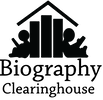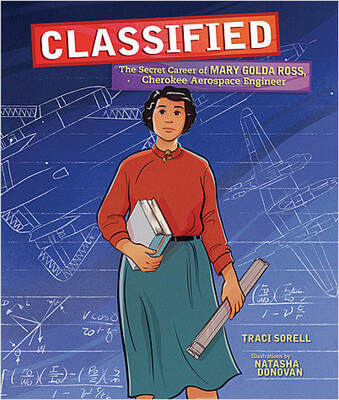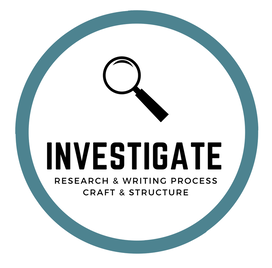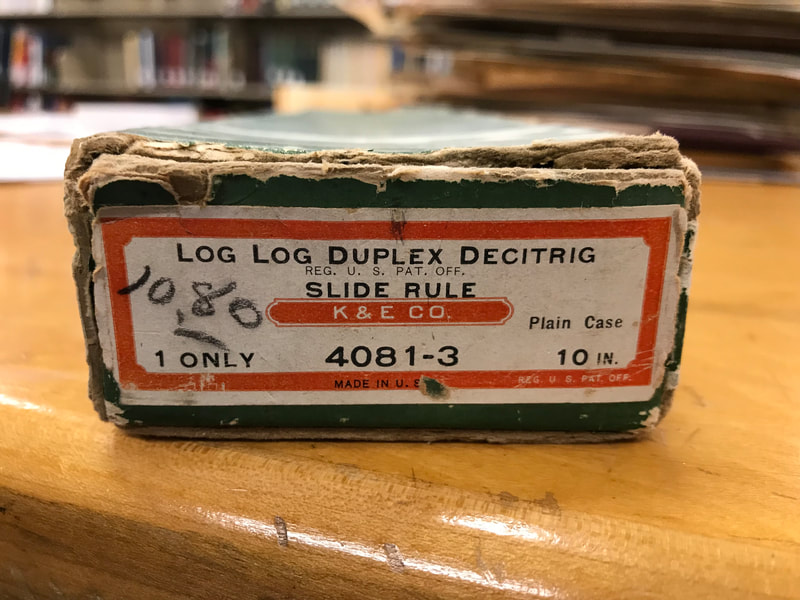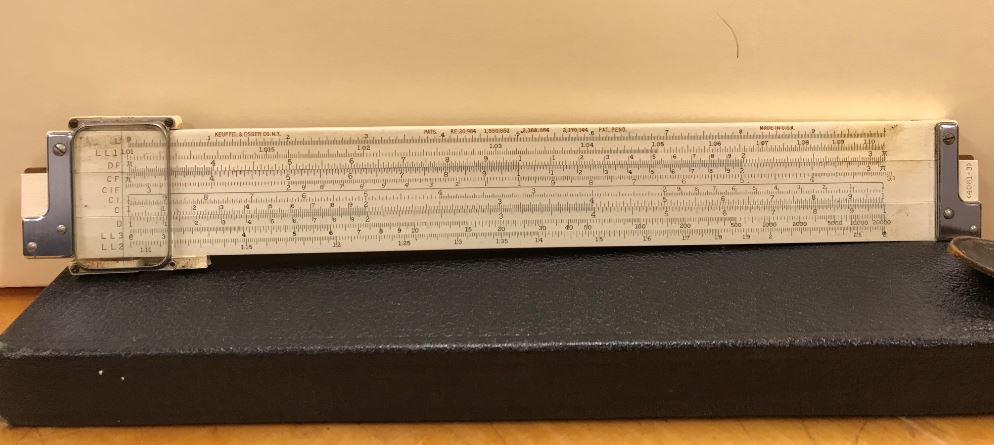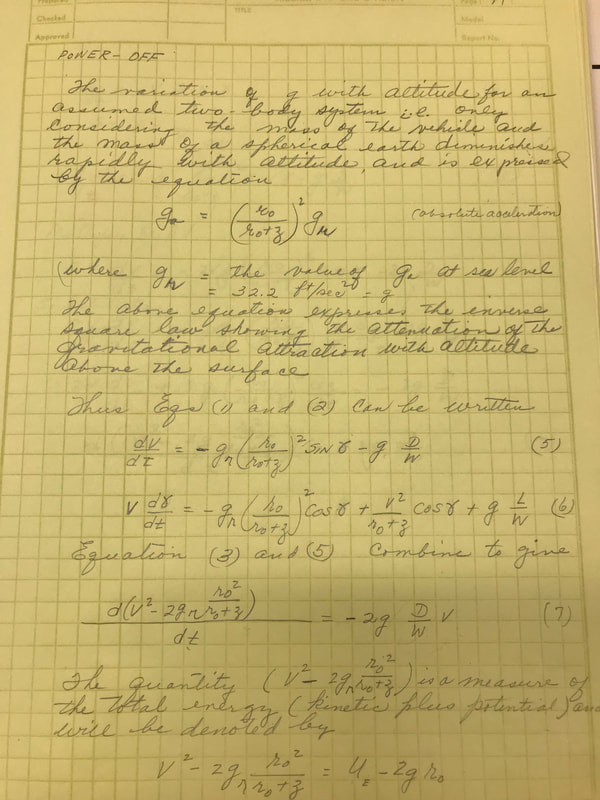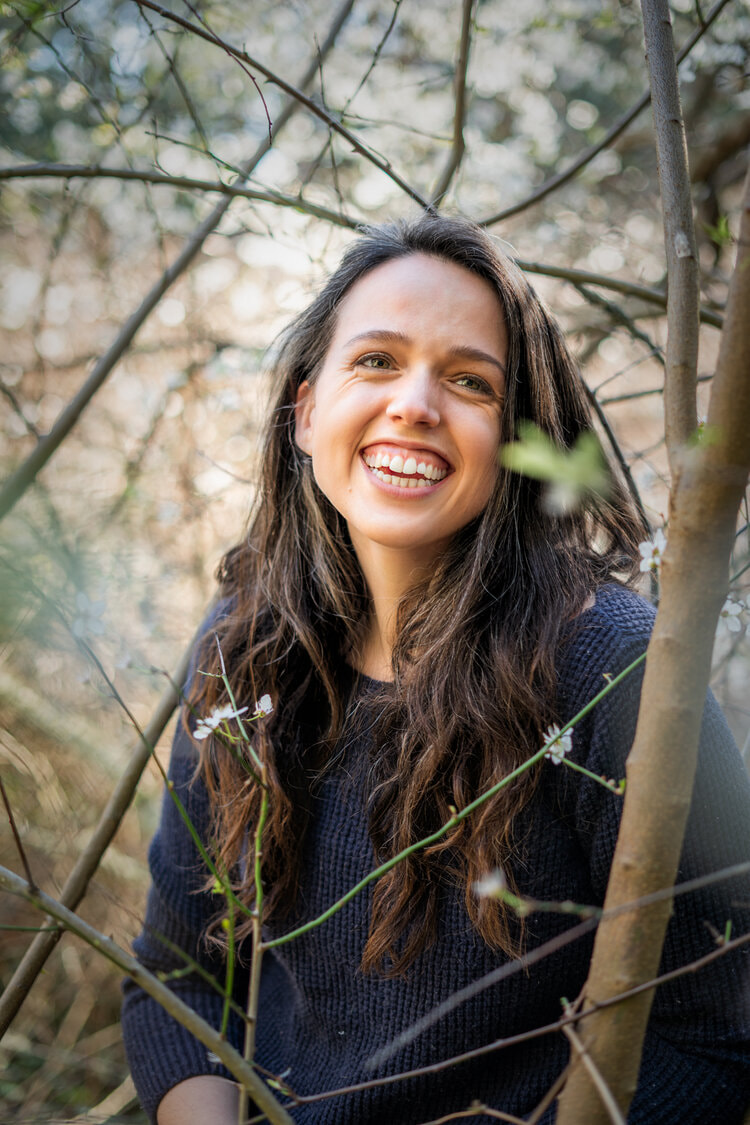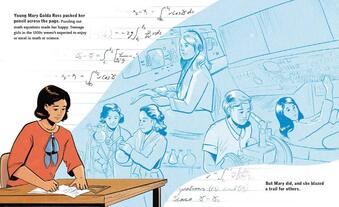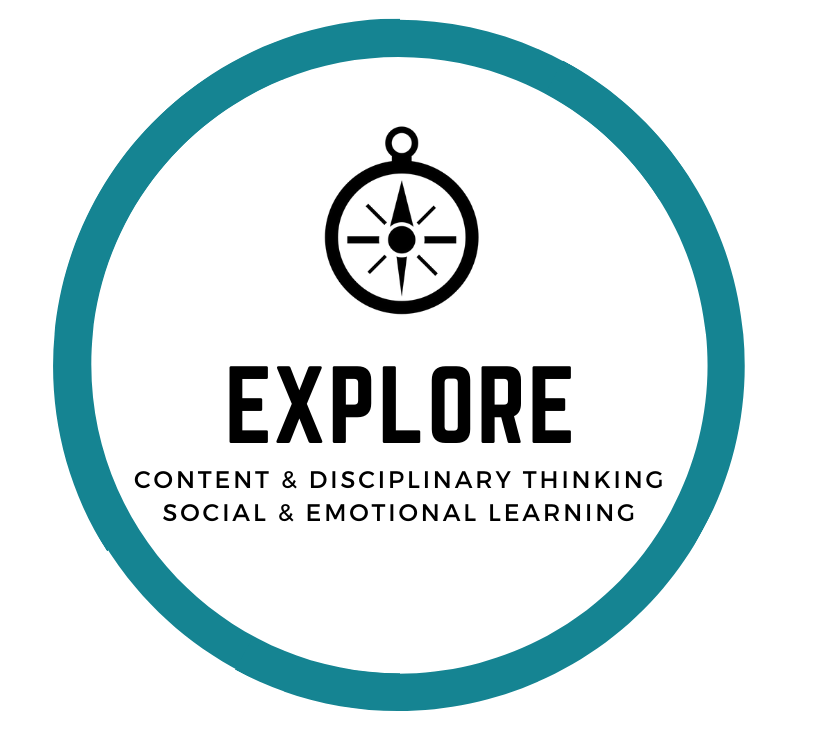|
Entry written by Mary Ann Cappiello and Donna Sabis-Burns, on behalf of The Biography Clearinghouse.
|
Research & Writing ProcessWho is Traci Sorell?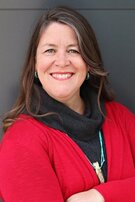 Photo by Kelly Downs Photography Photo by Kelly Downs Photography
Before she began writing for children, Traci’s work focused on helping Native Nations and their citizens. She wrote legal codes, testimony for Congressional hearings, federal budget requests, grants and reports. She continues that work by writing stories for young people and encouraging other Native writers and illustrators to share theirs. When Traci was a child, she never read culturally accurate books about the Cherokee or any other Indigenous peoples. The stories and poems she writes now reflect her mission to add to the canon of literature showing that Native Nations and their citizens still exist and thrive today. You can find out more about Traci on her website: https://www.tracisorell.com/about.
|
Traci's Process & Artifacts
|
|
In this interview, Traci discusses:
|
Who is Natasha Donovan?
|
"I am an illustrator with a focus on comics and children's illustration. I am Métis; my Métis family are the Delarondes and the Morins from Meadow Lake, Saskatchewan, but I spent most of my time growing up amongst the moss and ferns of Vancouver, Canada. My short comic work has appeared in The Other Side Anthology (2016), edited by Melanie Gillman and Kori Handwerker, This Place Anthology (2018), published by Portage & Main, and Wonderful Women of History, published by DC. I illustrate the award-winning children’s book series The Mothers of Xsan (written by Brett Huson). I was also the illustrator of the graphic novels Surviving the City and From the Roots Up (written by Tasha Spillett) and the picture book biography Classified (written by Traci Sorrell). I have a BA from the University of British Columbia, and prior to illustration I worked in academic and magazine publishing. Due to my life taking many strange turns, I currently live on a tiny farm along with several wonderful creatures - of both human and non-human varieties - in Deming, Washington." You can find out more about Natasha on her website: https://www.natashadonovan.com/contact.
|
Natasha's Process & Artifacts
|
|
In this interview, Natasha discusses:
|
Craft & Structure
Text Structure Study of Traci Sorell's Books
|
Classified tells the life story of Mary Golda Ross, a mid-20th century Cherokee aerospace engineer who made tremendous contributions to the US space program. The text structure is chronological; this straightforward method of organizing Mary’s early life and career allows readers to see her life in steadily evolving steps and stages. Students can listen to Traci talk about structure in our interview (24:24-27:14).
Including Classified, Traci Sorell has written four children’s books that center community and traditional Native American values: At the Mountain’s Base, a work of historical fiction, Classified, a biography, and two other works of nonfiction, We are Grateful Otsaliheliga and We are Still Here! Native American Truths Everyone Should Know. |
Allow students to spend time with all four books, in whatever ways make sense for you (e.g., shared reading, small groups, and/or interactive read aloud.
Next, pose the following questions:
Depending on the age of your students, they will need more or less scaffolding to identify the organizational structure. What students will observe most easily is that they can sort the books into two categories: narrative (At the Mountain’s Base) and chronological (the biography and the other two nonfiction books). Knowing that the choice of text structure is all about the relationship between content, author’s purpose, and audience, ask students to consider the other organizational structure at work in each book. Each book presents text in a structure that repeats across two-page spreads. Support students to identify how in We are Still Here! Native American Truths Everyone Should Know, each two-page spread introduces the theme and then lists actions taken by the U.S. government. This pattern repeats across the book. We are Grateful Otsaliheliga cycles through the four seasons of a single year, and within each season, Sorell lists six specific activities that reflect Cherokee values, spread over three two-page spreads. Leverage this conversation when your students are next writing their own original nonfiction. Have them consider what order and text structure makes the most sense for what they are writing and who they want to reach. |
Illustrating Nonfiction: A Natasha Donovan Illustration Study
|
Illustrated biography and nonfiction provides readers with powerful opportunities to learn information visually. Sometimes, the illustrations match the text and sometimes the illustrations extend the text. This activity offers students an opportunity to examine Classified more deeply after looking at Natasha Donovan’s body of nonfiction illustration.
|
After reading Classified, provide students with the opportunity to explore Donovan’s other nonfiction picture books, all focused on the natural world. Start by showing students the three thumbnails from The Eagle Mother that Donovan shares on her website. Drawing on Molly Bang’s theory of illustration,
ask students
|
Next, provide students with an opportunity to read these nonfiction picture books in their entirety: The Sockeye Mother, The Grizzly Mother, The Wolf Mother, The Frog Mother, and The Eagle Mother, all part of the Mothers of Xsan series written by Hetxw’ms Gyetxw, also known as Brett D. Huson. The books are available in print and ebook formats from Highwater Press, an imprint of Portage and Main, a Canadian based publisher, that works “to honour and support Indigenous resurgence by amplifying diverse narratives that share joy, creativity, strength, bravery, and community.” Excerpts are available on the series site, which provide a sense of the language demands of each text.
You may have students read all five books in the series or you might organize them into groups by animals of interest. As students read, have them explore the connections between text and illustration. In what ways do the illustrations match the text? In what ways do they expand students' understanding of the animal, its life cycle, and the ecosystem in which it lives?
You may have students read all five books in the series or you might organize them into groups by animals of interest. As students read, have them explore the connections between text and illustration. In what ways do the illustrations match the text? In what ways do they expand students' understanding of the animal, its life cycle, and the ecosystem in which it lives?
|
Use this experience as a lens to explore Donovan’s illustrations in Classified more deeply, to better understand the role that illustrations convey in biography. Start by asking your students:
|
Next, play an excerpt from our interview with Donovan, where she discusses decisions that she made on various illustrations (8:30-15). Look at the artifacts from those drafts included above. Have students identify when Donovan’s illustrations match the text and when they extend the text. How does a close reading of these illustrations further students’ understanding of Mary Golda Ross’s life and work, and the era in which she lived?
|
Classified: The Secret Career of Mary Golda Ross, Cherokee Aerospace Engineer provides readers with a window into the mid-20th century. Through the life of Mary Golda Ross, readers bear witness to the diversification of the scientific workforce, the ongoing barriers professional women faced, and the technological transformations that changed the way we live. The following teaching ideas help students explore different facets of these experiences. The book also speaks to the role that family and cultural values play in any one individual’s life, and the impact of that individual on others.
|
Content & Disciplinary Thinking
Understanding Mary Golda Ross
|
Provide your students with opportunities to hear more about Mary Golda Ross’s life and contributions through a range of multimodal texts. Start off by playing the clip of Mary’s 1958 appearance on the television show What’s My Line? (2 min:35 sec), to give students the opportunity to see and hear her.
Provide students with an opportunity to unpack the clip after watching it. Have them consider: |
|
- How is this show similar to and different from television shows today?
- When much does Mary speak compared to everyone else? When does the host speak for her? When does she speak for herself?
- How do the panelists react when hearing about Mary’s job? What does that reveal about Mary’s world?
|
Next, offer students the opportunity to explore these other sources. Some of these sources require more teacher support than others, depending upon the age of your students.
As your students explore, ask them to
|
Secondary Sources from Cherokee Voices:
Secondary Sources from U.S. Government Institutions:
|
The Space Race as Collaboration
|
As an aerospace engineer, Mary Golda Ross worked on the top-secret Skunk Works Project of Lockheed Martin. As Sorell writes in Classified, Skunk Works research contributed to the Apollo space missions and the eventual moon walk by U.S. astronauts in 1969. You can show students an example of her work: Planetary Flight Handbook, No. 9, NASA. What other women were involved in Space Race research?
After reading Classified, provide time for students to explore these other books about the Space Race. |
Picture Books:
Chapter Books:
|
In Classified, Sorrell notes that “whenever Mary received awards, she always thanked her colleagues because she knew no one person deserved credit for what everyone had done together.” As students explore whichever permutation of texts you select, ask them to consider the ways in which teamwork is represented. In what ways are individuals featured? In what ways is their collective and collaborative work represented? Use this conversation as an opportunity to discuss the process of “doing science” as collaborative rather than singular work. This can also serve as a springboard to critical considerations regarding the ways inventions and scientific breakthroughs are often attributed to specific individuals instead of to the team as a whole, changing our understanding of what makes change possible. Change happens when groups of people work together over time.
Tech Tools that Support Mathematical and Scientific Thinking
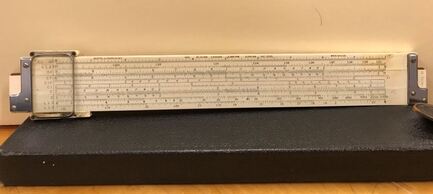
Mary Golda Ross’s life spanned the 20th century. How did technology change and evolve over her lifetime? What tools did she use at the beginning of her career? What tools did she use by the end of her career? What changed and what stayed the same? Mary’s work began using a slide ruler. You can see a photo of Mary’s slide ruler here, amongst Sorell’s artifacts. What does a slide ruler do? How and why did people use it? To answer this question and more, have students explore Engineered: Engineering Design at Work, written by Shannon Hunt, illustrated by James Gulliver Hancock. The book offers a primer on the field of engineering and has a special section devoted to aerospace engineering. You might want to invite local engineers into your classroom, in-person or via video conferencing, to talk to your students about what they do, and how the tools of their trade have changed over the course of their careers.
Social & Emotional Learning
Exploring Values
|
From the first pages of the book to the last, author Traci Sorell affirms the significance of Cherokee values in Mary Golda Ross’s life. We discuss this in our interview with Traci (11:44-14:00) and refer both to the red box that names Cherokee values on the verso page, as well as the information on Cherokee values in the backmatter.
|
After reading Classified, ask students to share their understanding of what the word values means. Then ask students to share their understanding of the Cherokee values that are represented in the book. How do they define them in their own words?
|
Next, ask students to make a list of the values that are important to them. Provide them with an opportunity to talk to one another in pairs or small groups about their values. How are their values similar and different from one another? How are the words they use to describe their values similar and different from one another? After they’ve had a chance to do this, allow them time to consider where their values come from. Are they influenced by the grown-ups in their lives? Their community? Their religion? Are their values influenced by their family cultural heritage(s), race, or ethnicity(ies)? How do their education influence their values, and how do their values influence their education? Finally, ask students to look again at the four Cherokee values discussed in the back matter. What connections do students see between the values discussed in their group and the Cherokee values that guided Mary’s life?
Mentoring Others
Mary Golda Ross was known for the mentoring work she did, supporting younger women and indigenous women entering the field of STEM. What kind of mentoring exists in your school? In the lives of your students and their families? In your community?
If you have 1-2 hours . . . |
If you have 1-2 days . . . |
If you have 1-2 weeks . . . |
|
Ask your students to think about the mentors in their own lives. Who has helped them learn new things? Who has supported them as they tried to learn something new? Students might list coaches, dance teachers, karate teachers, librarians, older book buddies, and religious leaders. But they also are likely to mention their friends and classmates, siblings, and neighbors.
|
Allow students time to ask the grown-ups in their lives about their mentors. Support students by brainstorming together the kinds of questions they can ask, rather than handing them set questions, helping students to ask questions that identify their grown-ups’ mentors in childhood and adult years, personally and professionally.
Have students share those anecdotes in class. What are the similarities and differences between their grown-ups’ responses? |
Finally, ask students to consider who they could mentor in your school community, and in what ways. Support them as they design and carry out their mentoring plan.
|
New Texts & ArtifactsCoin ArtDid you know there is a U.S. dollar coin named in honor of Mary? Congress authorizes commemorative coins that celebrate and honor American people, places, events, and institutions. See the process here: Design and Selection Process | How Coins Are Made Students can research other important Indigenous figures who have done extraordinary things and are also honored by a commemorative coin. To what tribal nation do they belong? Who are they? What are they famous for? By enlarging the coin through the classroom projector, have the students recreate the coin and label the items they identify using Classified and other resources as a reference. Why do you think the coin artist included those items? Students could then research other indigenous leaders, scientists, artists, etc. and create their own original coins and share as a celebration activity.
|
Creative Writing
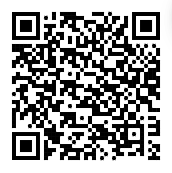
After reading Classified, students can read more about Mary Golda Ross using the QR code. This article mentions Mary’s great-great-grandfather, John Ross as an important figure within the Cherokee Nation. Who was he and why was he important in history? Do you think this historical figure influenced Mary in her lifetime? Ask students to imagine what kind of advice John Ross may have given Mary, or how he may have inspired her to break social and professional barriers and become an influential historical figure in her own right. After reading the article, students can create a comic strip reflecting how Mary may have interacted with her great-great grandfather if he were alive during her time. It can be written either digitally (see a How-to video for creating a template in Google Slides) or students can create one by drawing and coloring into a free template found online.
Social Media Characterization

Representation matters. Social media can help amplify people previously overlooked or overshadowed and their transformative accomplishments. How might Mary Golda Ross present herself through social media today? Do you think Mary ever imagined science and technology going so far as it has with the world wide web? Instagram? Facebook? Twitter? Do you think she would have used social media to amplify her voice as an underrepresented woman? Perhaps she would have used it as a tool to advocate the field of science and mathematics to other Native American high school students? Students can share their understandings about Mary Golda Ross through creating a social media platform. The following activities allow students to apply what they know about Mary to a modern and social context. Students can create images on the Instagram worksheet, tweet from their character's point of view on the Twitter worksheet, or show their understandings of their character's connections and life through the Facebook worksheet. Click here for the free download for the social media packet by the Peacock Poet.
Illustrating Nonfiction
Provide your students with the opportunity to closely examine nonfiction illustration craft by exploring Natasha Donovan’s work, and using it to understand the different decisions illustrators make when they illustrate a nonfiction picture book.
If you have 1-2 hours . . . |
If you have 1-2 days . . . |
If you have 1-2 weeks . . . |
|
After reading Classified, provide students with the opportunity to explore Natasha Donovan’s other nonfiction picture books. Start by showing students excerpts of illustrations that Donovan shares on her website.
As you project the images digitally, ask students
|
Next, provide students with an opportunity to read the other nonfiction picture books that Donovan has illustrated: The Sockeye Mother, The Grizzly Mother, The Wolf Mother, The Frog Mother, and The Eagle Mother, all part of the Mothers of Xsan series written by Hetxw’ms Gyetxw, also known as Brett D. Huson. The books are available in print and ebook formats from Highwater Press, an imprint of Portage and Main, a Canadian based publisher, that works “to honour and support Indigenous resurgence by amplifying diverse narratives that share joy, creativity, strength, bravery, and community.” Excerpts are available on the series site, which provide a sense of the language demands of each text.
You may have students read all five books in the series or you might organize them into groups by animals of interest. As students read, have them explore the connections between text and illustration. In what ways do the illustrations match the text? In what ways do they expand students' understanding of the animal, its life cycle, and the ecosystem in which it lives? Finally, have students bring those illustration questions to Classified. Have students listen to our interview with Donovan, from the 8 minute 30 seconds spot to 15 minutes. What do they learn about her approach to the process? When do Donovan’s illustrations match the text and when do they expand students’ understanding of Mary Golda Ross’s life and work, and era in which she lived? |
Have students select topics about which they are individually passionate. Coordinate with your school or public librarian to find resources to support their various topics.
Support them as they consider their researched information and decide what kind of nonfiction picture book they might write. Will it be a traditional survey book? A narrative? A biography? As students make these decisions,help them to map out their organizational text structure using index cards that they can move around. On each index card, have students include one part of the information from their research that they want to include, and a couple of words about what they could illustrate to support that information. Ask students to consider the questions they brought to Donovan’s work. In what ways will the illustrations match the text? In what ways will the illustrations expand the text? When students finish their books, make sure to offer time for community sharing, either reading the books aloud to younger students in your school, a family reading day in the classroom, a reading at your public library, or a reading at a local nursing home or assisted living center. |
Cappiello, M.A., & Sabis-Burns, D. (2021). Classified: The Secret Career of Mary Golda Ross, Cherokee Aerospace Engineer. The Biography Clearinghouse.]
